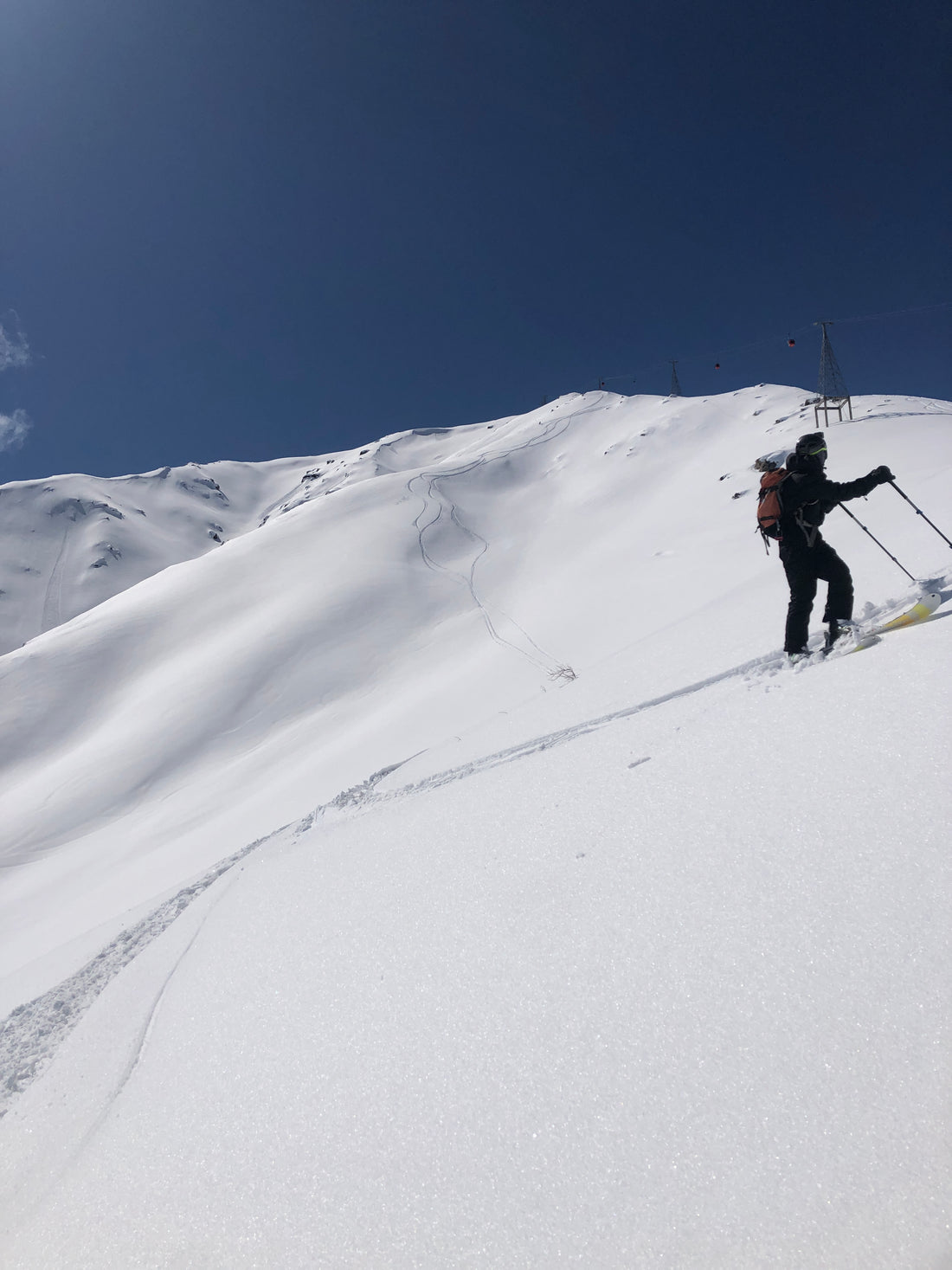From the first day many of us step foot on the hill, we dream of taking the chair lift for the first time, getting to the top of the mountain, and skiing all the way down carefree.
We also know that it takes hard work and many hours on the mountain to improve.
The leap from being a beginner skier to the intermediate level can be intimidating and inaccessible.
This is maybe one of the most difficult stages because it’s hard to feel independent in snow sports when you still feel like you need a lot of guidance.
For snowboarders, click here to read How to Bridge the Beginner to Intermediate Gap in Snowboarding.
Goal #1: Skiing Parallel
Why: One of the biggest challenges beginner skiers face is switching from wedge turns to parallel turns. Though challenging, once accomplished, you will be able to ski a lot more difficult and varied terrain.
What does a parallel turn feel like?
When transitioning from a wedge turn to a parallel turn, the first thing you want to think about is pressure and weight distribution. When you wedge-turn, the pressure is more evenly distributed on both skis and you use your inside edges to help control your speed. When you start to parallel turn, 90% of your pressure should be on your downhill ski until you complete the turn, at which point your weight transfers to your new downhill ski. This may seem complicated, and it does take some practice and skill, but there are a few good drills to help turn that wedge turn into a parallel turn.
Try this: Lift your uphill ski before your turn. Start on a shallow pitch that you feel comfortable on and start doing long turns across the hill. Once you’ve successfully turned, think about your uphill ski (the ski closer to the top of the hill). If there is any weight on it, try to transfer that weight to the downhill ski, and then start picking up that ski while going across the hill. It doesn’t have to be more than a quick tap; the idea is to ensure your weight is mostly on the downhill ski.
Then try this: Lift your uphill ski after your turn to go across the hill in parallel. Once you’ve mastered pressure distribution, you can try transitioning from wedge to parallel right after your turn. First, make a wedge turn; as you complete the turn, think about keeping most of the pressure (80–90%) on the downhill ski. Once your turn is complete and you are going across the hill, try picking up your uphill ski and moving it parallel to your downhill ski as you move across the hill.
Goal #2: Confidence on Steeper Terrain
Why: Something many skiers struggle with is staying centered on the ski and facing downhill while skiing. When we feel nervous or apprehensive – which is totally normal – we tend to ski in the “backseat.” The backseat in skiing refers to leaning back on your skis, particularly when facing downhill, often when turning. Even advanced skiers revert to the backseat on difficult or very steep terrain sometimes. This is because the ski moves perpetually downhill, and in order to keep up with the ski and stay centered, you need to keep yourself forward-facing and on top of the ski.
What does having your weight forward feel like? It feels like having more pressure from your shins on the tongue of your ski boot instead of a pinching pressure on your calves at the back of the boot. What does having your weight forward look like? It looks like your hips are balanced over the center of your skis instead of hovering over the tails like you’re trying to use a questionable pit toilet at the trailhead.
Try this: Practice leaning forward while turning on more shallow terrain where you feel comfortable first, to help boost your confidence in staying forward on all types of terrain. Now, try lifting your uphill ski before and after your turns, but this time try to make sure you are only lifting the back of your ski and keeping the front of the ski on the snow. This will help remind you to keep your weight and pressure in the toe of your ski at all times. Once you start moving your ski from wedge to parallel by sliding your ski into parallel in each turn, you can lift only the back of the ski and ensure your body is forward in your turns as well.
Goal #3: Using Your Poles Correctly
Why: When you are learning to ski, poles don’t always play much of a role. They do help with stability and control, but at the beginning, it’s more important to think about your legs and upper body and introduce using poles later. If you feel like you have good balance when you are starting to ski, I would suggest not using poles until you need them (like advancing onto more difficult or technical terrain). Once you are ready to start using poles, I find it effective to use your poles to help plan your turns. We can do this with something called “pole planting.” Pole planting on difficult terrain like steeps or bumps can help us project into the next turn. Pole planting helps our bodies stay in alignment and in control as we move into the next turn.
Try this: When skiing across the hill, think about where you want to turn and reach your downhill pole in front of you while keeping your uphill pole at your side. Do this by just flicking your wrist, keeping your elbows in and your shoulders square. When you point your pole where you want to turn, plant your pole on the snow and try to make your turn around it. Keep practicing this until pole planting to help with your turns feels more natural.
Pro Tip: A great way to control your pole plants and turns is by counting how long your turns are.
For example, ski across the hill for 2 Mississippi, on 3 Mississippi, flick your wrist and swing your pole, and on 4 Mississippi, plant your pole and start your turn. Try this again in the same pattern on the other side.
Ultimately, skiing and riding should spark joy, so make sure you’re managing your frustration by saying kind things to yourself, taking breaks, and knowing when to switch tasks when the challenge outweighs the joy.
If you have the means to do so, investing in a proper course with specific goals is a great way to advance on your journey.
We recommend our Intermediate Ski Course. IISM Gulmarg does offer intermediate training, but it is conducted on their own small slope. This is more like a demo of instruction than actual training, leaving a lot of gaps and not offering substantial progress.
Other activities like yoga, pilates, martial arts, and other strength-training workouts will help you get ready to feel your best once you step foot on the mountain.

